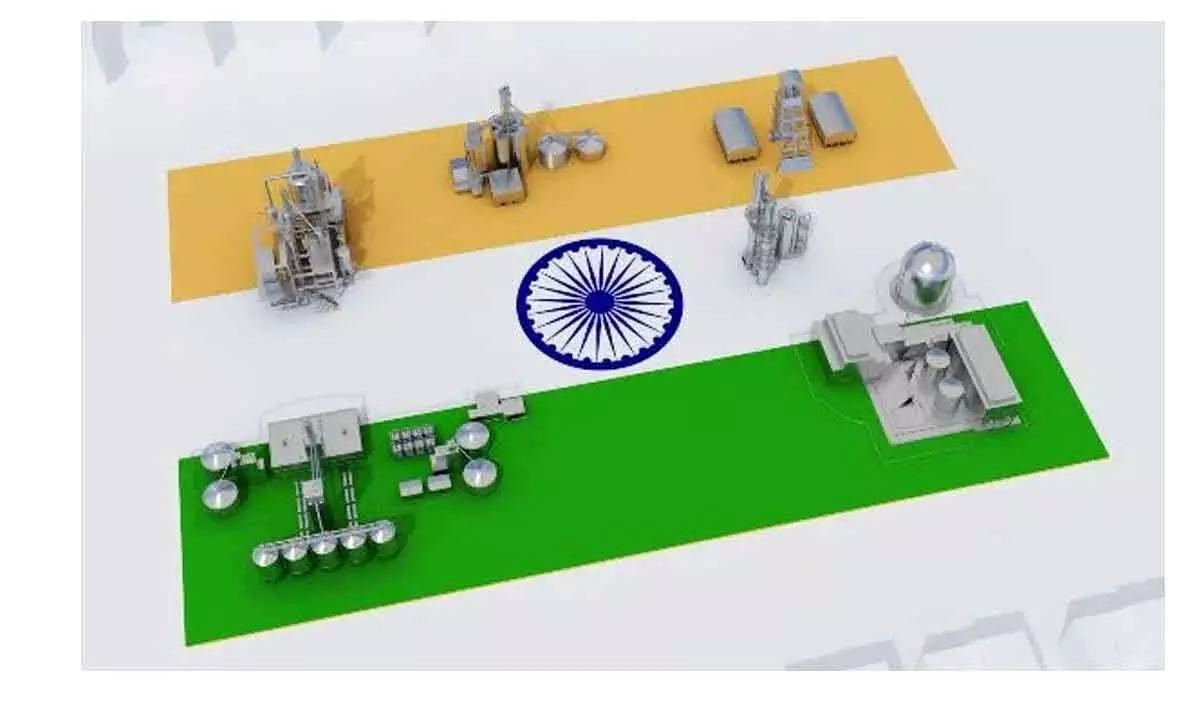Indian electronic manufacturing capabilities are on constant rise
This decade will bring major market opportunities for global players to enter India
image for illustrative purpose

India’s capacity to manufacture for the world has been demonstrated across four major segments – mobile phones, consumer electronics, IT hardware and electronic components – that account for over 70% of India’s domestic manufacturing profile. Global firms can readily leverage these domestic capabilities
India’s organic growth in the consumption of electronics, coupled with the Government’s target of achieving $300 billion worth of domestic electronics manufacturing by 2025–26, creates a unique opportunity for global firms to look at India as the manufacturing hub for the Silicon Age.
India, whose population has reached 1.4 billion, is supported by a demographic advantage where around 26% of the population belongs to the age group of 15–29 years and another roughly 26% is in the group of 0–14 years, India is positioned to become the largest global market for a tech-savvy young population.
The country has emerged as the second-largest mobile phone manufacturer in the world with more than 200 units having been set up on its soil. With some commodities gaining aspirational value and an increase in discretionary spending, this decade is poised to bring major market opportunities for global players to enter India and leverage its markets along with its young demography.
Further, the increasing spending power of the aspirational Indian middle class is expected to drive India’s GDP at nearly twice the global rates. As per International Monetary Fund (IMF) projections, India is poised to become the third largest economy in the world by 2028 with an estimated nominal GDP of $5.58 trillion, growing at an average rate of 6.55% per year between 2021 and 2028. Per capita GDP is set to cross $3,000 by 2025, further accelerating discretionary spending and fuelling demand in the electronics sector. There is more. The concerted push for digitisation across the country has prompted the start of a digital era. With the needle moving on the Digital India initiative, people of all age groups desire an improved quality of life. Between 2017 and 2022, the total number of internet subscribers in the country has grown at a compound annual growth rate (CAGR) of 15%, reaching 850.95 million by September 2022.
It comes as no surprise then that electronics has emerged as one of the fastest growing industries in the Silicon Age when the double movement of globalisation and the World Wide Web created a massive demand for electronic commodities. An increasingly digitalised world has ensured that there is no slowdown in the global electronic trade. Along with energy security, the pandemic also prompted the need for ‘electronic security’ with supply chain disruptions stalling the production of components in some sectors – from automobiles to healthcare devices – and resulting in a shortage of electronic components.
Today, due to the explosion of the Silicon Age paradigm and the digital era lifestyle globally, electronics system design and manufacturing (ESDM) has emerged as one of the fastest growing industries globally.
In fact, it has also led to an urgent need for rapid expansion in cost-effective manufacturing, which is mostly done at cost-competitive locations in east and southeast Asia through electronics manufacturing services (EMS) companies. The collective EMS market is projected to reach $1,145 billion by 2026 with a CAGR of 5.4% between 2021–26.8 India’s domestic demand for consumer electronics is also witnessing growth and is expected to touch $21.18 billion by 2025.
India’s capacity to manufacture for the world has been demonstrated across four major segments – mobile phones, consumer electronics, IT hardware and electronic components – that account for over 70% of India’s domestic manufacturing profile. Global firms can readily leverage these domestic capabilities to achieve supply chain diversification and scale up production by manufacturing in India.
The result – India is the second largest mobile phone manufacturer globally and is also the second largest market for smartphones in the world, making it the fastest growing smartphone market in the world. Production of mobile phones has gone up from 60 million in 2015 to 310 million in 2022 at a CAGR of 26%. The consideration of mobile phone manufacturing and its sub-assemblies or sub-components as flagship initiatives under the ‘Make in India’ initiative has further supported this growth. As on date, the over 200 manufacturing units of mobile phones, sub-assemblies, parts and components have employed around seven lakh people in the country – a success story of successful manufacturing localisation that is worthy of emulation in other sectors.
The current mobile phone value chain positions Korea, Japan, Taiwan and China at higher levels of the smile curve. While Vietnam has also been able to increase its local value through the assembly of complex products such as displays, India is working towards developing capabilities across domains such as display assembly, camera module, flexible printed circuits, and speakers to localise its manufacturing capabilities.

